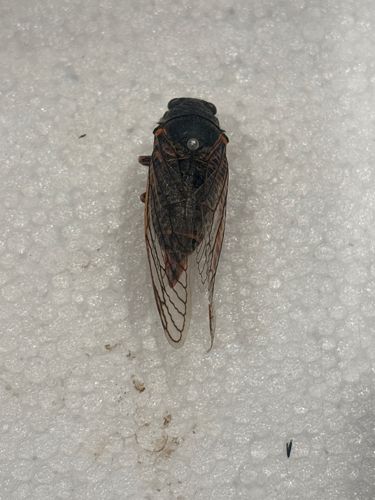Cicada
Scientific Name: Magicicada spp. or Neocicada hieroglyphica (based on appearance)
Order & Family: Hemiptera, Cicadidae
Size: Typically 2.5 to 5 cm (1 to 2 inches) in length, though some species can be larger.

Natural Habitat
Found in temperate and tropical regions worldwide, often in forests, woodlands, and urban areas with trees. Nymphs live underground feeding on tree roots, while adults emerge and reside on trees.
Diet & Feeding
Cicadas are herbivorous. Nymphs feed on xylem sap from the roots of trees and woody shrubs, while adult cicadas feed on xylem sap from the branches and twigs of trees and shrubs.
Behavior Patterns
Cicadas are known for their distinctive loud mating calls produced by males. They have a long nymphal stage underground (from 2 to 17 years depending on the species) before emerging as adults. Adult life is short, typically a few weeks, focused on mating and egg-laying. Females lay eggs in slits cut into tree branches. They are generally slow-moving and not aggressive.
Risks & Benefits
Risks: Large emergences can cause damage to young trees due to egg-laying in branches (flagging). Their loud sound can be a nuisance. Benefits: They serve as a food source for birds, mammals, and other insects. Their nymphal tunneling can help aerate soil. They are not known to bite or sting humans and are not considered pests in most situations. They are important components of many ecosystems.
Identified on: 9/19/2025